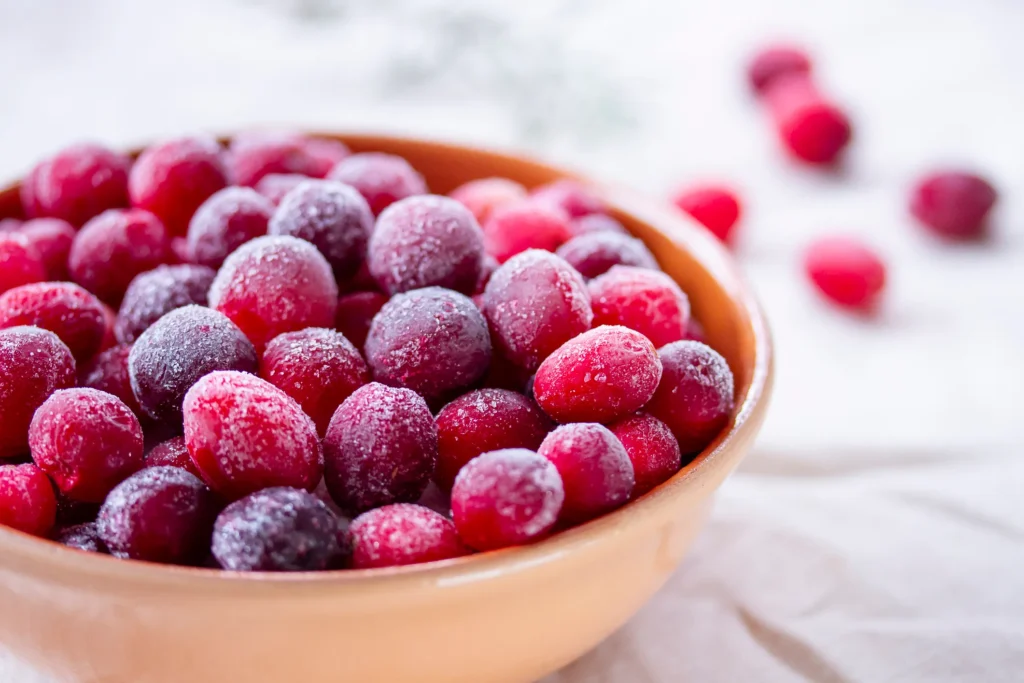
Winter brings crisp air, cozy blankets, and a shift in the produce aisle. While the cold season might seem like a time when fresh fruits are scarce, nature surprises us with a bounty of vibrant, nutrient-packed winter fruits. These seasonal gems are not only delicious but also loaded with vitamins and minerals to keep you healthy through the chilly months. As someone who grew up dreading winter’s gloom, I found joy in discovering how these fruits could brighten both my plate and my mood. Let’s dive into the colorful world of winter fruits, explore their nutritional benefits, and learn how to make them a staple in your diet.
Why Winter Fruits Are Your Cold-Season Allies
Winter fruits are nature’s way of ensuring we stay nourished when the days are short and the temperatures drop. Unlike summer’s juicy berries, winter fruits like citrus, pomegranates, and persimmons are designed to thrive in cooler climates, offering a burst of flavor and nutrition. According to the Harvard T.H. Chan School of Public Health, fruits are critical for delivering vitamins, minerals, and antioxidants that support immunity—a must during flu season. I remember my grandmother always keeping a bowl of oranges on the table in winter, claiming they’d “keep the colds away.” She wasn’t wrong—winter fruits are packed with immune-boosting nutrients like vitamin C, fiber, and potassium.
These fruits also bring psychological benefits. Their bright colors and tangy flavors can lift your spirits on dreary days, combating seasonal affective disorder (SAD). A study from the National Institute of Health suggests that diets rich in fruits and vegetables can improve mental health. So, whether it’s the zesty aroma of a peeled clementine or the jewel-like seeds of a pomegranate, winter fruits are a sensory and nutritional delight.
Top Winter Fruits and Their Nutritional Superpowers
Let’s explore some of the most popular winter fruits, their vitamins and minerals, and how they contribute to your health. Each fruit is a powerhouse in its own right, and incorporating them into your diet can make winter feel less like a slog.
Oranges: The Vitamin C Champions
Oranges are the poster child of winter fruits, and for good reason. One medium orange provides about 70 mg of vitamin C, meeting nearly 100% of the daily recommended intake for adults. This vitamin is crucial for immune function, collagen production, and fighting free radicals. Oranges also offer fiber, folate, and antioxidants like flavonoids, which support heart health. I still recall the joy of peeling an orange during a snowy afternoon, its citrusy scent filling the room. Try adding orange segments to salads or blending them into smoothies for a refreshing boost.
Pomegranates: Antioxidant Jewels
Pomegranates are like nature’s candy, with their ruby-red arils bursting with flavor. They’re rich in antioxidants, particularly punicalagins, which have been shown to reduce inflammation and protect against heart disease, according to WebMD. A single pomegranate provides about 28 mg of vitamin C, 1.7 grams of fiber, and a good dose of vitamin K, which supports bone health. I love sprinkling pomegranate seeds over yogurt or using them to garnish a winter salad for a festive touch. Their vibrant color makes any dish Instagram-worthy.
Persimmons: The Sweet Underdog
Persimmons, with their honey-like sweetness, are often overlooked but deserve a spot in your winter fruit basket. They’re loaded with vitamins A and C, manganese, and fiber. According to the Cleveland Clinic, persimmons may help reduce cholesterol levels and improve digestion. My first encounter with a persimmon was at a farmer’s market, where the vendor convinced me to try a ripe Fuyu variety—it was love at first bite. Slice them into salads or eat them fresh for a sweet, nutrient-packed snack.
Kiwis: Tiny but Mighty
Don’t let their small size fool you—kiwis are nutritional dynamos. One kiwi delivers more than 100% of your daily vitamin C needs, along with vitamin K, vitamin E, and potassium. They also contain actinidin, an enzyme that aids digestion, as noted by the California Kiwifruit Commission. I started adding kiwis to my morning oatmeal after a friend recommended them for a digestive boost, and I’ve never looked back. Their tangy-sweet flavor pairs beautifully with yogurt or smoothies.
Apples: The Classic Winter Staple
Apples are available year-round but shine in winter due to their long storage life. They’re rich in fiber (about 4 grams per medium apple), vitamin C, and antioxidants like quercetin, which may reduce allergy symptoms, according to Healthline. Growing up, my family always had a basket of apples on the counter, and we’d bake them with cinnamon for a warm winter treat. Try pairing apple slices with nut butter for a satisfying snack.
Grapefruit: The Zesty Detoxifier
Grapefruit’s tart flavor is a wake-up call for your taste buds. It’s packed with vitamin C, vitamin A, and lycopene (in pink varieties), which supports heart health and may reduce cancer risk, per the American Institute for Cancer Research. I used to shy away from grapefruit’s bitterness until I tried broiling it with a sprinkle of honey—game-changer! Add grapefruit to smoothies or enjoy it as a refreshing breakfast option.
Nutritional Comparison: Winter Fruits at a Glance
To help you choose the best winter fruits for your needs, here’s a comparison of their key nutrients. This table highlights the vitamins and minerals in a typical serving size, based on data from the USDA FoodData Central.
Winter Fruit Nutritional Showdown
| Fruit | Serving Size | Vitamin C (mg) | Fiber (g) | Potassium (mg) | Other Key Nutrients |
|---|---|---|---|---|---|
| Orange | 1 medium (131g) | 70 | 3.1 | 237 | Folate, Flavonoids |
| Pomegranate | 1 cup arils (174g) | 28 | 7 | 236 | Vitamin K, Punicalagins |
| Persimmon | 1 medium (168g) | 12.6 | 6 | 270 | Vitamin A, Manganese |
| Kiwi | 1 medium (69g) | 71 | 2.1 | 215 | Vitamin K, Actinidin |
| Apple | 1 medium (182g) | 14 | 4.4 | 195 | Quercetin, Vitamin E |
| Grapefruit | 1/2 fruit (123g) | 38 | 2 | 166 | Vitamin A, Lycopene (pink) |
This table shows that each fruit brings something unique to the table—kiwis and oranges lead in vitamin C, while pomegranates and persimmons excel in fiber. Use this as a guide to mix and match based on your nutritional goals.
How to Incorporate Winter Fruits into Your Diet
Winter fruits are versatile and easy to integrate into meals and snacks. Here are some practical, delicious ways to enjoy them, inspired by my own experiments in the kitchen and tips from nutrition experts.
- Smoothies and Juices: Blend oranges, kiwis, and grapefruit for a vitamin C-packed smoothie. Add a handful of pomegranate seeds for texture. The Academy of Nutrition and Dietetics suggests smoothies as an easy way to boost fruit intake.
- Salads: Toss apple slices, pomegranate arils, or persimmon wedges into green salads for a sweet crunch. A citrus vinaigrette made with fresh orange juice ties it all together.
- Baked Goods: Apples and persimmons shine in baked dishes like pies or crumbles. I once made an apple-persimmon crisp that was a hit at a winter gathering—warm, comforting, and healthy-ish!
- Snacks: Keep peeled oranges or kiwis in the fridge for grab-and-go snacks. Pair apples with almond butter for a protein-packed option.
- Desserts: Broil grapefruit with honey or sprinkle pomegranate seeds over yogurt for a light, nutrient-rich dessert.
Pro tip: Buy in season and local when possible to maximize freshness and flavor. Check out your local farmers’ market for the best picks.
Health Benefits Beyond Nutrition
Winter fruits do more than just provide vitamins and minerals—they offer holistic health benefits. Their high antioxidant content helps combat oxidative stress, which is linked to chronic diseases like heart disease and cancer, according to the Mayo Clinic. Fiber-rich fruits like apples and pomegranates promote gut health, which is increasingly tied to overall wellness, including mood regulation. I’ve noticed that since incorporating more fruits into my winter diet, my digestion and energy levels have improved noticeably.
These fruits also support weight management. Their fiber and water content make them filling, reducing the urge to snack on less healthy options. A study from the Journal of Nutrition found that higher fruit intake is associated with lower body weight over time. So, next time you’re craving a winter treat, reach for a persimmon instead of a cookie.
Tips for Choosing and Storing Winter Fruits
To get the most out of your winter fruits, follow these tips for selection and storage:
- Oranges: Choose firm, heavy oranges with smooth skin. Store at room temperature for up to a week or in the fridge for a month.
- Pomegranates: Look for heavy fruits with deep color. Store in the fridge for up to two months. Arils can be frozen for longer storage.
- Persimmons: Fuyu persimmons should be firm, while Hachiya varieties are soft when ripe. Store at room temperature until ripe, then refrigerate.
- Kiwis: Pick kiwis that yield slightly to pressure. Store in the fridge for up to a month, or at room temperature to ripen faster.
- Apples: Select firm apples without bruises. Store in the fridge’s crisper drawer for up to a month.
- Grapefruit: Choose heavy fruits with smooth skin. Store in the fridge for up to six weeks.
I learned the hard way that unripe Hachiya persimmons are astringent and unpleasant—patience is key! Always check for ripeness to ensure the best flavor and nutrient quality.
FAQ: Your Winter Fruit Questions Answered
Which winter fruit has the most vitamin C?
Kiwis and oranges are the top contenders, with kiwis often providing over 100% of the daily recommended vitamin C intake in just one fruit. Oranges follow closely, with about 70 mg per medium fruit.
Can winter fruits help with weight loss?
Yes! Their high fiber and water content make them filling, reducing overall calorie intake. Apples and pomegranates, in particular, are great for satiety.
How can I make winter fruits more exciting for kids?
Try making fruit kabobs with kiwi, orange segments, and apple chunks, or blend them into smoothies with fun names like “Winter Glow Juice.” Involving kids in the prep process also sparks interest.
Are there any risks to eating too many winter fruits?
While rare, overconsumption can lead to excess sugar intake or digestive issues due to high fiber. Balance is key—aim for 2–3 servings daily, as recommended by the USDA Dietary Guidelines.
Can I eat winter fruits if I have diabetes?
Most winter fruits have a low to moderate glycemic index, making them suitable for diabetes management when eaten in moderation. Consult a dietitian for personalized advice.
Conclusion: Embrace the Winter Fruit Revolution
Winter fruits are more than just a seasonal treat—they’re a nutritional lifeline that can transform your health and mood during the colder months. From the immune-boosting power of oranges to the antioxidant-rich arils of pomegranates, these fruits offer a delicious way to stay vibrant and nourished. My journey with winter fruits began with a simple orange shared with my grandmother, and now I can’t imagine winter without a colorful fruit bowl on my table. Whether you’re blending them into smoothies, tossing them into salads, or enjoying them fresh, these fruits are an accessible, affordable way to elevate your diet.
Ready to make winter fruits a part of your routine? Start by visiting your local grocery store or farmers’ market to stock up on oranges, kiwis, and pomegranates. Experiment with new recipes, share them with loved ones, and savor the burst of flavor and health benefits they bring. As the days grow colder, let these fruits be your warm, nutritious companions. What’s your favorite winter fruit, and how do you enjoy it? Share your ideas and let’s keep the winter fruit revolution going!
